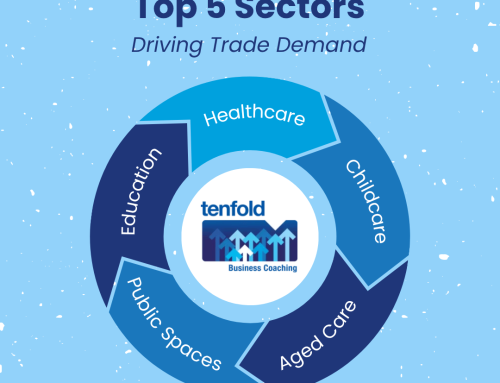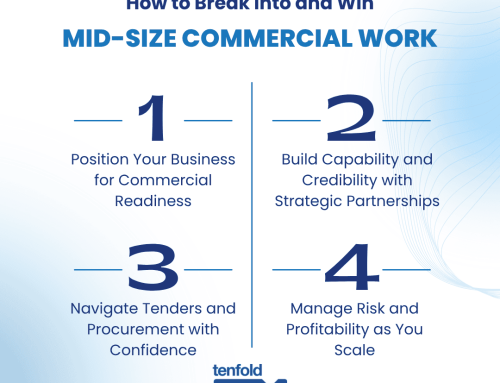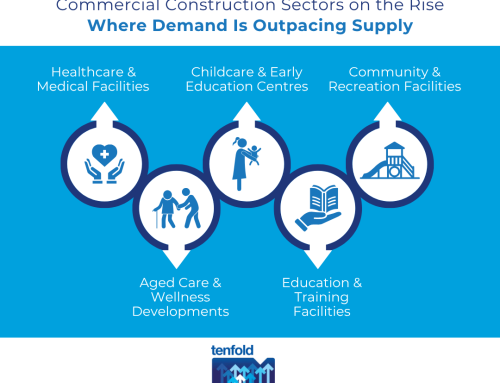Economic signals for small-medium businesses in Australia | June 2024
It’s challenging to understand what’s going on in the economy at the moment. Some signals, like the low unemployment rate, point to strong economic conditions. Other signals point to the contrary, such as the number of company insolvencies trending up.
It’s important for many of you as you implement your big picture plans to understand what the economic conditions might look like around the corner. Insights like these can guide you, whether you’re planning on purchasing a factory, thinking about whether labour is going to be easier to recruit in the future, whether sales orders are likely to surge or materials costs have stabilised.
I thought I’d share some lesser-known indicators and explain how they’re influencing the economy in Australia at the moment, and how to apply them to your plans.
In this briefing:
Indicator 1: Property prices and the ‘wealth effect’
Indicator 2: Inflation and interest rates
Indicator 3: Net migration
Longer Term – 2025 and Beyond
My intention here is to provide a pragmatic view and practical advice: don’t be alarmed, be alert and consider how to use these insights to make informed decisions.
Indicator 1: Property prices and the ‘wealth effect’
Are you aware house prices in Brisbane have gone up by nearly 60% over 4 years, versus only 10% in Melbourne?
Since the start of COVID, house prices in Brisbane, Adelaide and Perth have gone up by 60%, yet Melbourne has only gone up by 11%. This means an average homeowner with a $1,000,000 house in Brisbane has seen their wealth grow by $375,000 in 4 years, whereas a homeowner with the same house value pre-COVID in Melbourne has only seen $100,000 of appreciation over the same period.
It is proven that when people feel they are wealthier due to the increase in value of their house or investments they are more likely to spend more – it’s the ‘wealth effect’ of property price appreciation. This spending can drive inflation which as we know, can then lead to interest rates rises.

In my last economic briefing I broke the population into three main groups; the wealthiest, the middle-income group and the low-income group, and I explained their future spending patterns. (You can re-read the briefing here: Economic Conditions You Need to Prepare for – Feb 2024) The spending driven by the ‘wealth effect’ could see a divergence in the middle-income group in Perth, Adelaide and Brisbane versus the middle-income group in Melbourne.
What this means for your business: you need to remain aware of which demographic groups influence your revenues, and continue adjusting your marketing focus and niche markets accordingly. Keep discussing this with your coach.
Indicator 2: Inflation and interest rates
Are you aware that New Zealand has had 2 recessions in the last 2 years?
While the Australian economy has been tracking reasonably well, New Zealand has had 4 negative quarters out of the last 6 (2 negative quarters in a row is the technical definition of a recession). A significant factor in the different performances of the two economies has been the different interest rates. New Zealand’s rate currently sits at 5.5%, while Australia’s is down at 4.35%. While each economy has different drivers, interest rates do matter.
New Zealand GDP Growth:

Source: https://tradingeconomics.com/new-zealand/gdp-growth
Australia’s rate of inflation isn’t going down to the RBA’s target level of 2% – 3% quickly enough. Anyone who has recently incurred a 20% – 30% increase in their building or vehicle insurance premium will attest to the pain of price hikes. Ongoing high inflation led the Reserve Bank in their June meeting to discuss the case for raising rates; they didn’t even consider the case for lower interest rates. (FYI: they left interest rates at the same level.)
If they do raise interest rates in future months then we could expect to see different economic conditions, possibly a recession as New Zealand is experiencing.
Most Australians are about to receive a tax cut as part of the federal government’s stage 3 tax cuts. This could encourage people with more money in their pay packet to spend a bit more in the short term. Watch out for whether inflation increases and how the RBA will respond.
What this means for your business: Remain optimistically cautious. Keep an eye on your forward indicators like website traffic, enquiry levels and the time it takes for quotes to convert to orders/contracts. Keep investing strongly in your marketing.
Indicator 3: Net migration
Are you aware that Australia’s net migration levels are projected to halve next financial year, versus last financial year?

Source: https://www.abc.net.au/news/2024-05-15/federal-budget-immigration-reduction-intake-ballot/103839856
After the labour shortages during and exiting COVID, the federal government opened up immigration and we saw lots of people arriving on temporary visas. This meant that many roles that were sitting vacant in 2022 have been filled and has stimulated the Australian economy with these new workers and students purchasing goods and services.
That boom of immigration is winding back, with 2024-2025 expected to see only half the number of entrants and that volume staying low for the following 3 years. With 250,000 fewer people coming into Australia, that’s 1% less people buying groceries and clothes, renting houses and paying for health services.
Key takeaway: Immigration is going to slow down. The reduction of 250,000 new families, workers and students coming to Australia and spending money on goods and services will mean that we have to be better informed in our sales and marketing targeting to continue growing.
Every Tenfold client is a small-medium business. Unlike big businesses like the big 4 banks and the grocery retailers, Coles and Woolworths, we are small fish competing in big markets. We aren’t overly impacted by the size of the economy. Where our individual markets, for example the construction sector, may not grow as fast or even shrink, we have the ability to take market share from competitors and grow at very health rates.
What this all means for your business: Continue to invest intelligently in marketing and sales activity. If economic conditions pull back a bit from here, you’ll be thankful that you invested the time to find your niche market, to improve your web presence, to update your sales incentive scheme or to improve the quality of your foolproof prospecting or tendering process. Don’t rest on your past successes, keep striving to be better.
Longer Term – 2025 and Beyond
If you want a deeper understanding of how the economy works and are ready for some technical economic theory, then the following reference paper provides insights to the longer-term trends and what is driving them.
For those of you who just want to focus on running your business, then know that we at Tenfold are reading and studying these sources to be able to guide you on many different levels.
I’m not an economist and this isn’t financial advice; by bringing you this I hope you have confidence in the big picture plans we develop with you, and also a broader understanding of the economy in which we’re rolling these plans out.
Cheers,
Ash
Additional reading:
Economic reference paper: https://www.bennelongfunds.com/sites/default/files/2024-04/quay-investment-perspectives-99-australian-interest-rates-heading-for-zero.pdf
https://www.macrobusiness.com.au/2024/05/australias-jobs-market-has-cracked/





